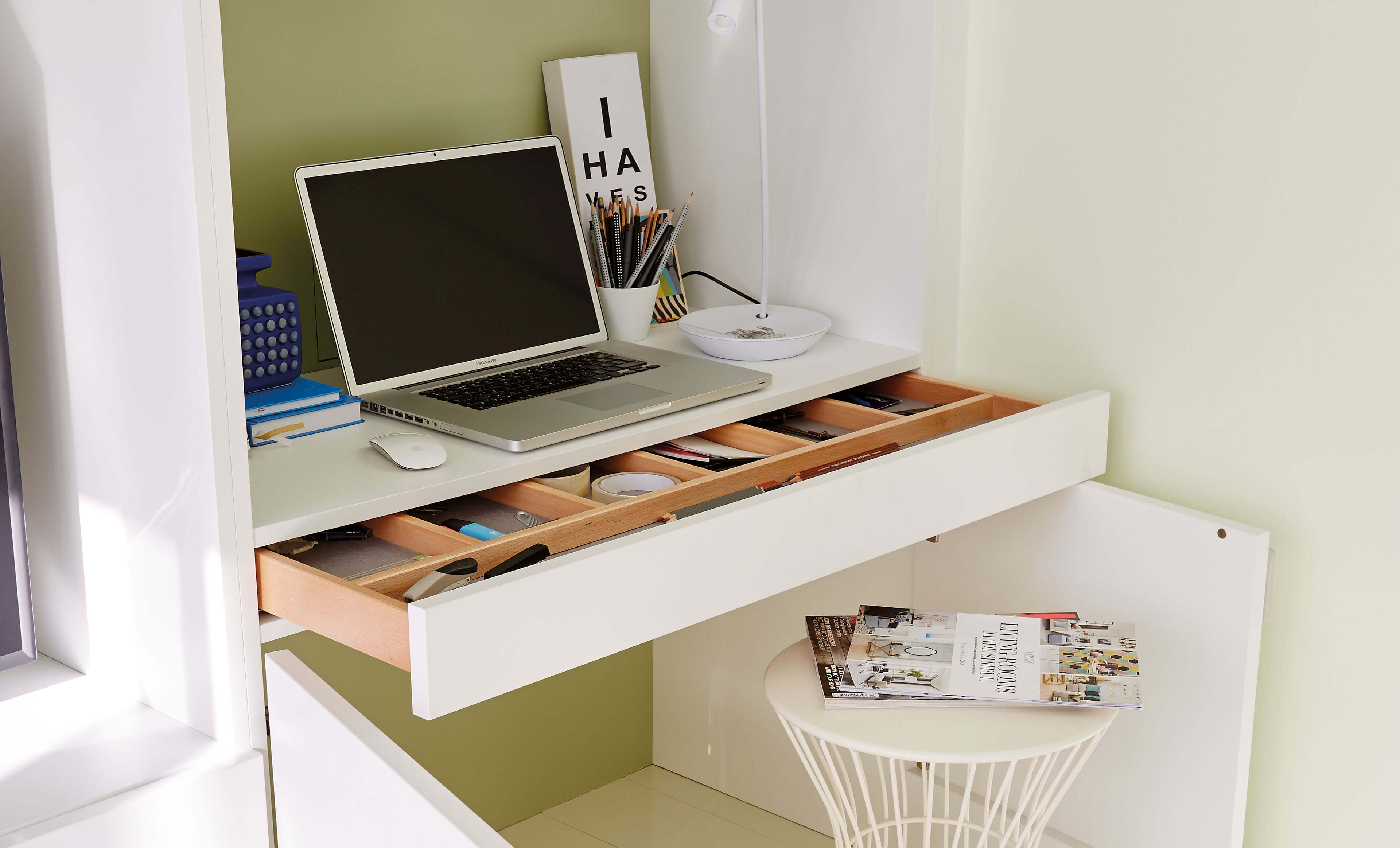
Compact Home Office Ideas – How to create a stylish and practical home office without a spare room
There’s no doubt that hybrid working is here to stay. With many of us...
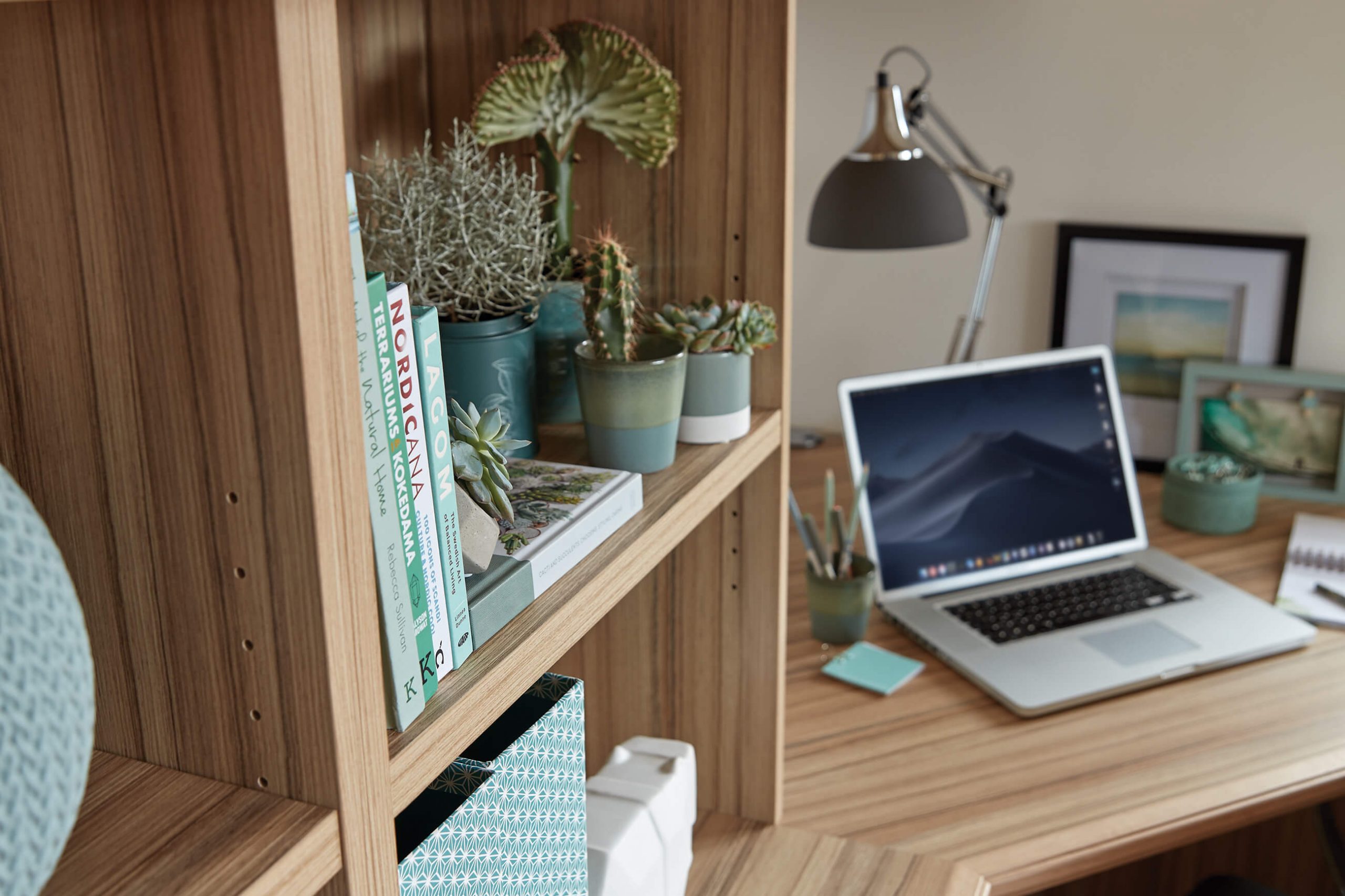
At Neville Johnson, we are proud to work alongside some of the industry’s top experts in furniture design and styling. From storage and organisation to colour trends and home zoning, we asked the experts for their advice on these popular topics.
Meet Simon Tcherniak, one of our extremely talented Senior Furniture Designers. Simon has been a part of the Neville Johnson family for over 10 years and has extensive knowledge in fitted furniture design, working alongside residential clients and interior designers. Our second expert is Sarah Harris – our brilliant stylist and specialist in creating stunning home spaces.
We recently asked them for their expert advice on topics we know our lovely clients are keen to know more about…

“Store your items one row deep wherever possible. Measure the deepest thing you want to store and the internal of the furniture doesn’t need to be any deeper than that. This will keep things as accessible as possible, and stop the storage closing in your room. Also, only keep what you love or need. There is no point in creating storage for anything else.
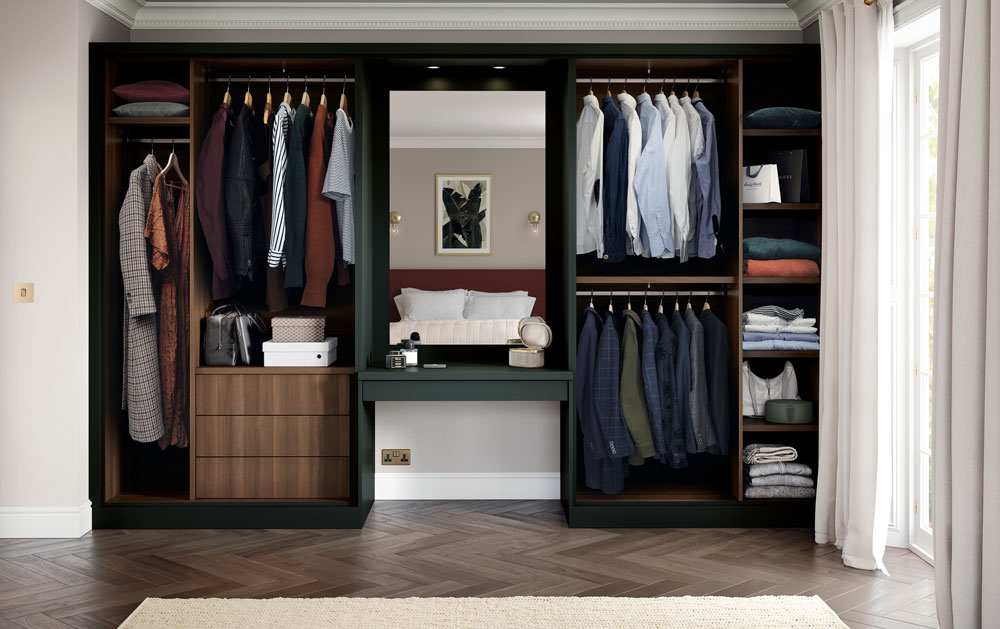
“If you really need to store more than one row of objects behind another, a pull out shelf will give you access to the items at the back. Also, go high! It’s amazing how much additional storage you gain! Going over doors also works – you don’t even notice the storage over your head when you enter a room.
“Imagine yourself in a rush. Does the design help you put things away or work against you?
“Write a list of the ‘must haves’ and the ‘nice to haves’, and make sure to include anyone else who will be using the space. You may think you know exactly what they want and need, but your designer may ask them questions you haven’t thought of.”
“Select a range of beautiful storage boxes or baskets to keep all essential items & unattractive clutter in. Label boxes for easy reference and access. Consider handwriting decorative labels as they can be much more pleasing to the eye.
“Store as much as possible behind closed cupboard doors, leaving shelves & surfaces clear for the chosen decorative items.
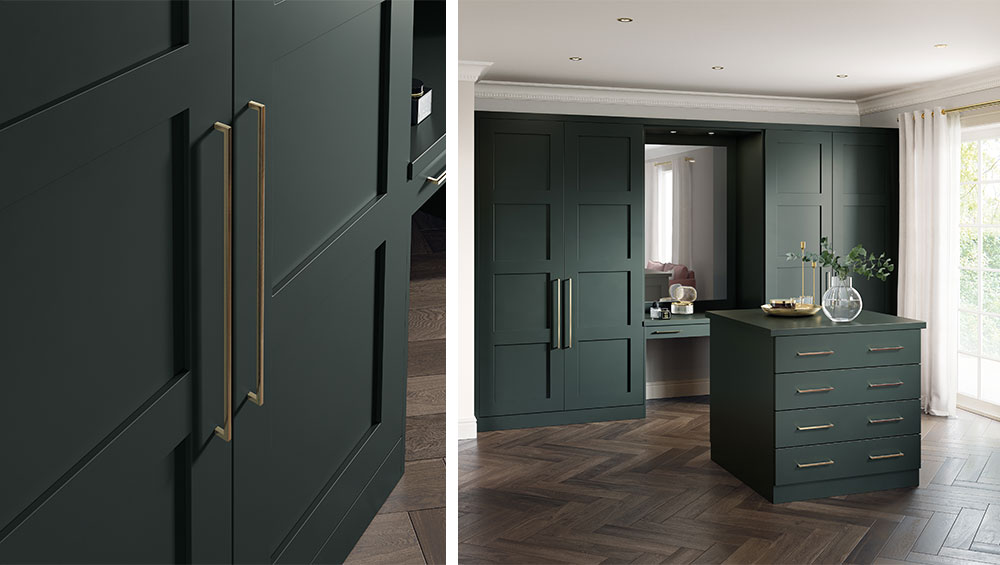
“Work essentials should be hidden away in files & boxes kept in the work zone. A single floating wall shelf is useful directly above your desk for easy access. Coffee tables and console tables with drawers beneath are useful storage pieces that leave the top available for lovely books & decorative pieces.”
“Choose muted colours like beiges and whites for a really pared-back look. Neutrals will help tone down large pieces of furniture and let simple small decorative pieces stand out for a really minimalist look. If you have darker colours on the wall, choose a colour close to the wall colour to get a similar effect.
Filling the whole wall with a piece of furniture, scribing to the ceiling as well as the walls and floor will not only create a really grand minimalistic design, but it will make your space seem taller and bigger. Especially when painted in soft muted colours.”

“In addition to height and colours, doors should be flat panel and push frontage to create a simpler feel. Infills can also be brought forward so that the doors are recessed into the surrounding frame. Finally, lighting creates a wash of light at the back of shelves or behind a set back plinth or ceiling infill for a stunning final touch.”
“Remove all decorative items from the space, leaving key pieces of furniture to act as a blank canvas. Add one or two statement pieces that service purpose, function and that are aesthetically pleasing. Favourite pieces can inspire a whole look – a certain art work or impactful ceramic, but avoid busy groups of items.
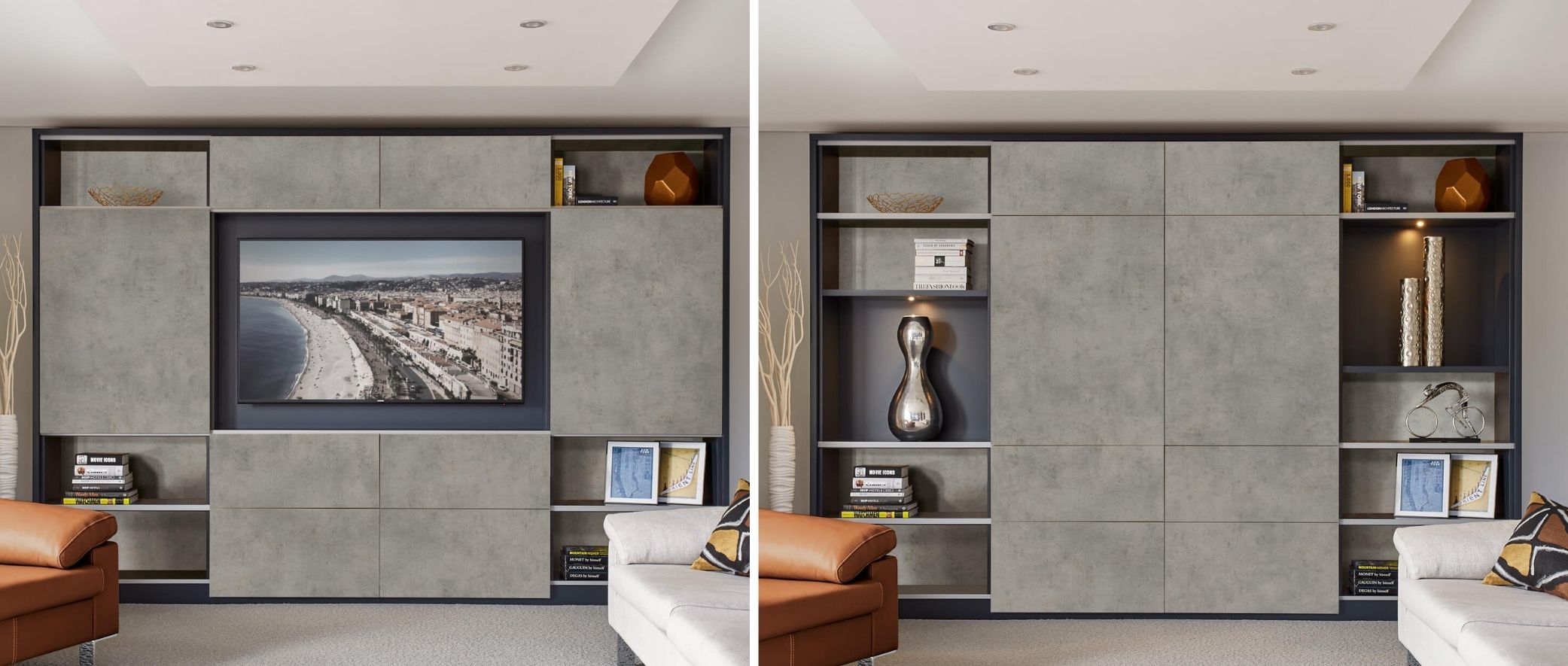
“We’ve seen clients move away from colder shades and introduce brighter and bolder accent colours. Back panels on open shelving or singular painted doors is a really good way to subtly add a little more colour into your design without being too over the top.
Mixed materials with similar hues and warmer tones are becoming more popular as we move closer to 2022. Since most of us have gained a new appreciation for our homes and interior, cosier shades are being welcomed into the home. Darker woods like our midnight black or dark stained oak have been a popular choice.”
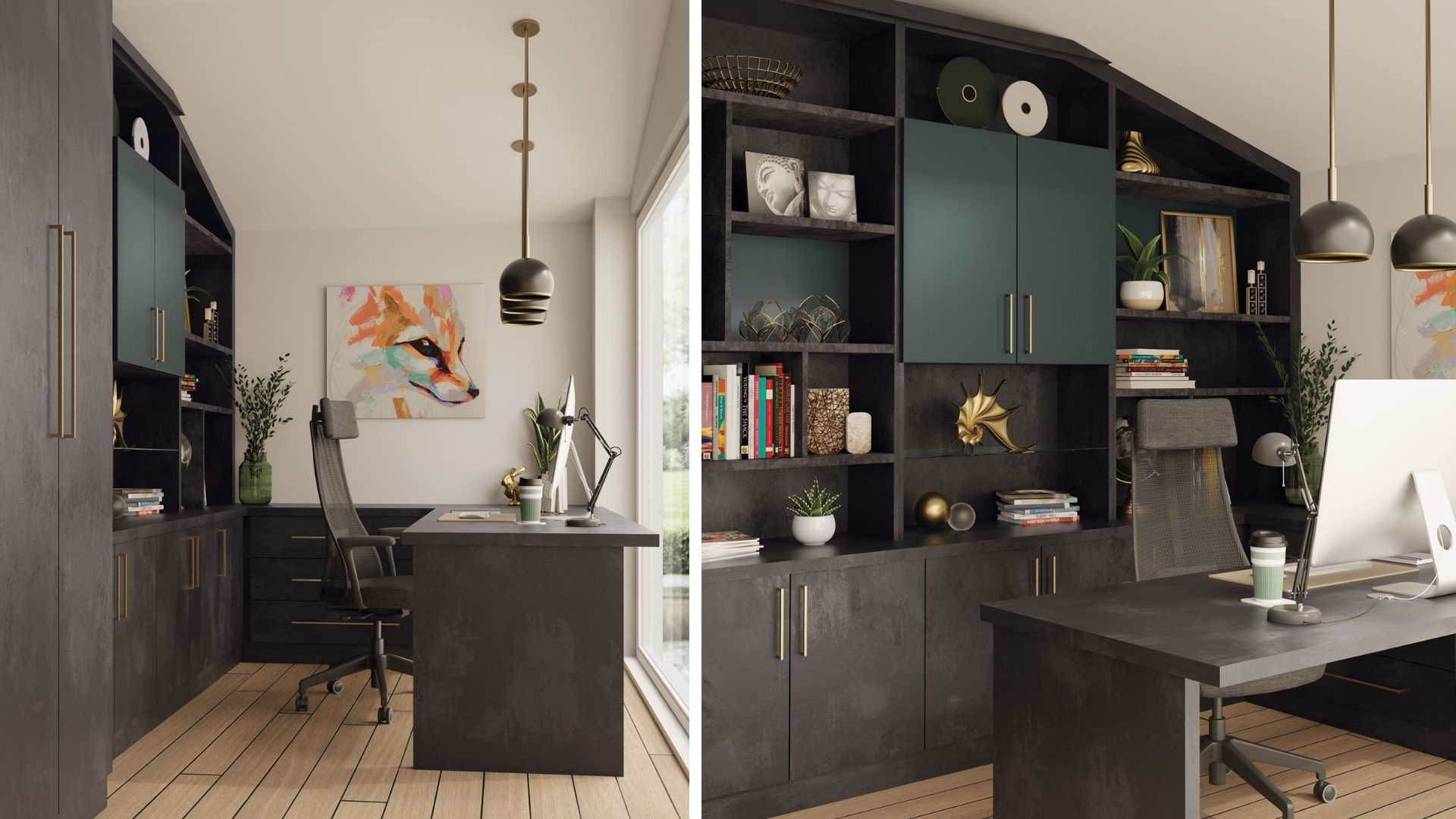
“If your workspace is part of the same room as your relaxation area in the evening, it is essential to separate these areas. It is very difficult to mentally switch off when your desk area is visible, so that demarcation is important to achieve.
A decorative screen could be drawn across a work area, becoming an artwork in its own right. Alternatively, an open shelving unit can act as a room divider, but put decorative objects in these to be attractive from the living area. Secret study areas within fitted furniture are a great way to hide a desk space, seat and work items behind doors.”

“When it comes to finding a relaxation spot in the home make sure you select somewhere with dimmable lighting or somewhere you can fit floor lamps to create a cosy ambience. Textural soft furnishings and large rugs will also help to reinforce the relaxation element of your home. It’s all in the finishing touches!”
If you are looking to follow our experts’ advice then request a design visit today.